Research & laboratories
PLUG into CAES
Capabilities
The third critical outcome of the Research pillar is the concept of a connected research environment in which researchers have seamless access — virtual and physical — to CAES facilities and laboratories in Idaho Falls and at the universities. This outcome relies on early initiatives — streamlining key features such as access and training across facilities, for example — and the development of a virtual CAES-connected campus. A connected research environment brings significant benefits to researchers, including a much broader array of leveraged capabilities that can be more readily accessed, scheduled and coordinated toward major proposals and highly sought technological advances. Research at CAES and at CAES’ affiliated centers is centered on the seven focus areas outlined in the CAES Strategy: Nuclear Energy; Energy-Water Nexus; Cybersecurity; Advanced Manufacturing; Innovative Energy Systems; Energy Policy; and Computing, Data, and Visualization.
List
CAES
Labs
CAES Labs
The CAES research facility houses eight laboratories, each providing a state-of-the-art environment where researchers have seamless access — virtual and physical.
CAES Labs
The CAES research facility houses five laboratories; each providing a state-of-the-art environment where researchers have seamless access — virtual and physical.
CAES University Labs
CAES collaboration inspires innovation and leverages collective resources to empower students, INL researchers, University Faculty, and industry to accelerate energy solutions.
List
University
Labs
CAES University Labs
CAES collaboration inspires innovation and leverages collective resources to empower students, researchers, faculty, and industry to accelerate energy solutions.
Search
Equipment
Equipment
The combined equipment infrastructure of the CAES consortium provides access to high-tech, state-of-the-art tools for research, academia, and regional companies.
Equipment
The combined equipment infrastructure of the CAES consortium provides access to high-tech, state-of-the-art tools for research, academia, and regional companies.
Research Highlights
[smartslider3 slider=”10″]
Everything You Need to Know to Conduct Research at CAES
[drawattention ID=”5766″]
Resources
Commonly used forms, policies, and procedures, and applications can be found below.
[dpdfg_filtergrid custom_query=”custom” thumbnail_action=”none” show_thumbnail=”off” use_overlay=”off” show_post_meta=”off” show_custom_fields=”on” show_custom_content=”on” custom_content_container=”off” filter_taxonomies=”resource_type” filter_terms=”47,48,52″ default_filter=”52″ items_skin=”dp-dfg-skin-default dp-dfg-skin-library” items_width=”25%” show_search=”on” module_id=”resource-grid” _builder_version=”4.5.3″ dpdfg_entry_title_font=”|||on|||||” dpdfg_entry_title_text_align=”center” dpdfg_entry_title_text_color=”#055976″ dpdfg_entry_meta_font=”||||||||” dpdfg_entry_custom_text_align=”center” global_colors_info=”{}”][/dpdfg_filtergrid]
Get Expert Help
Office of Sponsored Programs — Proposal Support List





